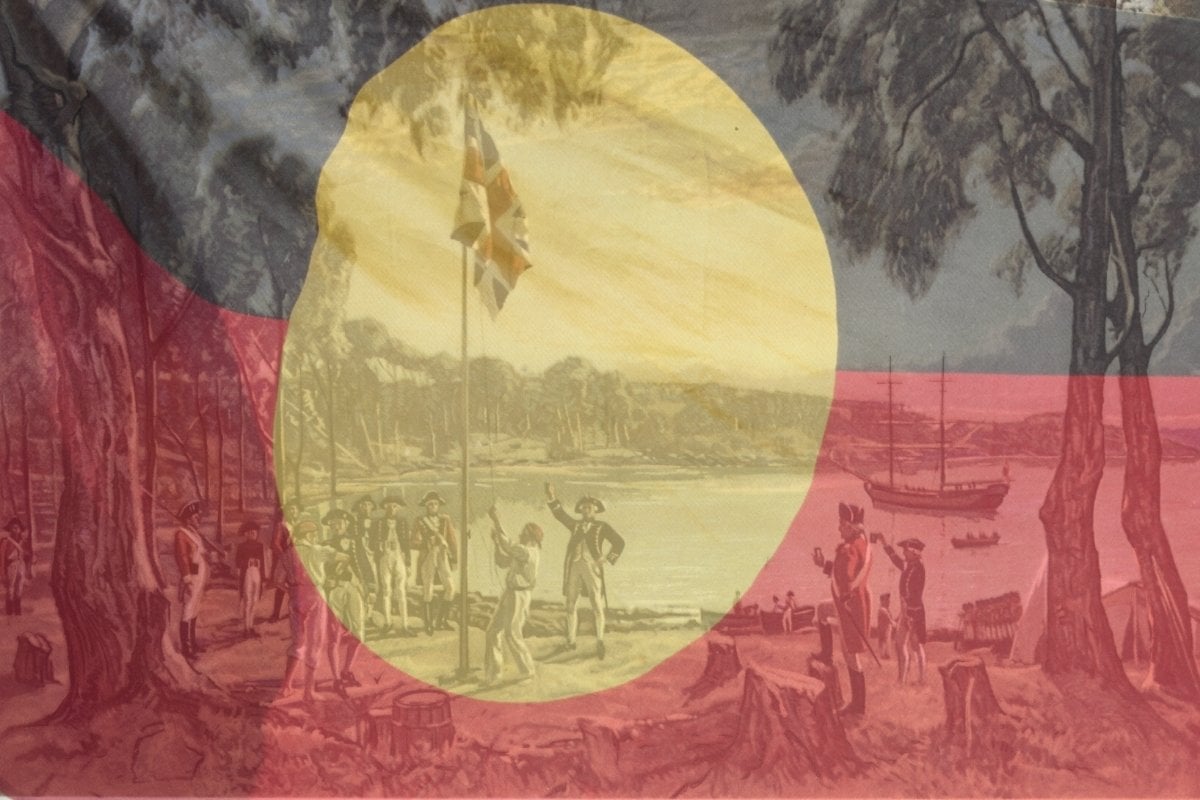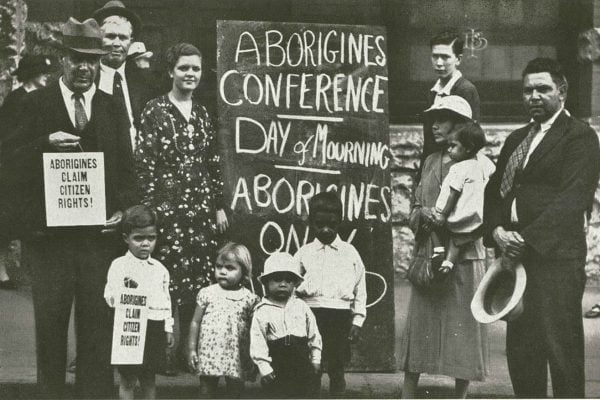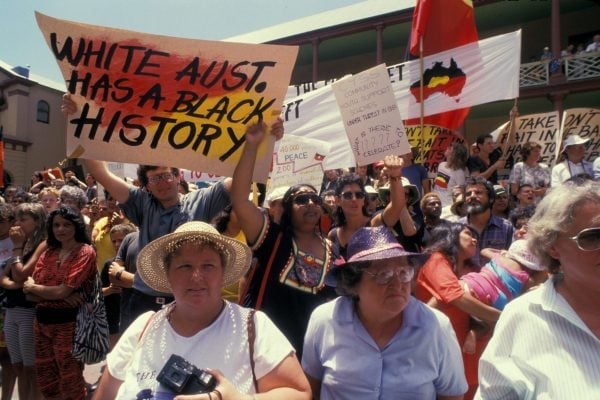
WARNING: Aboriginal and Torres Strait Islander readers are advised that the following article contains images, names and descriptions of people who have died.
Every year, as January 26 approaches, Australians raise the same difficult questions about our shared history and national identity as we reflect on what's worthy of celebration and what that celebration should look like.
It's an emotional subject. Morning TV, talkback radio, comments sections and social media are flooded with anger, frustration, defensiveness, and pain.
But as we tussle toward that date for yet another year, it's worth taking a step back for a moment and considering the facts.
Watch: How to be an ally to First Nations people on January 26. Post continues below.
1. January 26 was the day the First Fleet landed at Sydney Cove in 1788.
Research published by The Australia Institute in 2018 revealed that only 38 per cent of Australians know that.
Yet, it's the very source of the heartache around January 26.
When Captain Arthur Phillip raised the Union Jack on the Port Jackson shoreline on January 26, 1788, and proclaimed British sovereignty, he did so on the land of the Eora people.






























































































